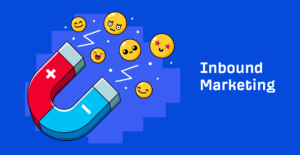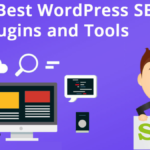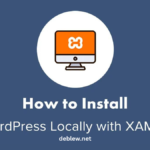Are you looking to increase your website traffic? Do you want to generate more leads for your business? If so, inbound marketing may be the solution for you. If you want to know everything there is to know about inbound marketing, you’ve come to the right place.
This complete guide will teach you everything you need to know about inbound marketing, from the basics to the more advanced concepts. By the end of this guide, you’ll be an expert on inbound marketing, and you’ll be able to put it into practice to grow your business.
What is Inbound Marketing?
Inbound marketing is a term that describes the process of drawing customers to your business through a variety of means, including content marketing, search engine optimization (SEO), and social media.
The goal of inbound marketing is to create a relationship with potential customers by providing them with valuable content that addresses their specific needs. This content must be easy to find and consume, which is why SEO and social media are such important components of inbound marketing.
While outbound marketing techniques, such as cold-calling and traditional advertising, can still be effective in some situations, inbound marketing offers a more cost-effective and efficient way to reach your target audience.
How Does Inbound Marketing Work?
Inbound marketing is a methodology that aligns marketing activities with the way customers behave. It’s an approach that attracts strangers and turns them into leads, then customers, and then promoters of your business.
Inbound marketing starts with creating helpful and interesting content that solves your target customers’ problems. This content can be in the form of blog posts, ebooks, webinars, or even just helpful how-to guides. Once you’ve created this valuable content, you need to get it in front of your target audience through SEO and social media.
Once potential customers are engaged with your content, it’s important to continue the conversation by nurturing these leads until they’re ready to buy. This is done through email marketing, targeted content offers, and workflows that guide prospects through your sales funnel.
Who Uses Inbound Marketing and Why?
Inbound marketing is a term that is used to describe a type of marketing that is focused on attracting customers or clients to a business, rather than the business seeking out customers. Inbound marketing typically consists of content marketing, search engine optimization, and social media marketing.
Many businesses and organisations use inbound marketing, as it can be an effective way to reach potential customers and clients. Inbound marketing can be used by businesses of all sizes, in all industries, and it can be customised to fit the needs of any business.
There are several reasons why businesses use inbound marketing. Inbound marketing can help businesses save money, as it is generally less expensive than other forms of marketing. In addition, inbound marketing can be very effective at generating leads and increasing sales.
Benefits of an Inbound Marketing
An inbound marketing strategy is a great way to bring in new customers and businesses. It’s a way of aligning your marketing efforts with how people shop and buy, which today is largely online.
Some of the benefits of an inbound marketing strategy include:
- Increased website traffic: By creating targeted content that is optimised for search engines, you can attract more visitors to your website.
- More leads and sales: By nurturing your leads with relevant and helpful content, you can guide them through the buyer’s journey until they’re ready to make a purchase.
- Improved brand awareness and reputation: By consistently creating high-quality content, you can build trust and credibility with your target audience, making them more likely to do business with you.
- Converting leads into customers: Once you have attracted leads with your inbound marketing efforts, it’s important to convert them into customers.
- Cost-effective: Inbound marketing is often more cost-effective than outbound marketing since you are targeting people who are already interested in what you have to offer.
Common Problems Inbound Marketing Can Solve
Inbound marketing can be a powerful tool for driving leads and sales. However, it’s not without its challenges. Here are some common problems inbound marketing can solve:
- Lack of website traffic: One of the biggest challenges businesses face is getting enough website traffic. Inbound marketing can help by attracting visitors through targeted content and SEO.
- Low conversion rates: Once you have visitors on your website, you need to convert them into leads or customers. Inbound marketing can help by providing valuable content that speaks to their needs and encourages them to take action.
- Long sales cycles: The final challenge is converting leads into customers, which can often take months or even years. Inbound marketing can help by nurturing leads with relevant content until they’re ready to buy.
ROI of a Successful Inbound Marketing Program
A successful inbound marketing program can provide a significant return on investment (ROI). By creating compelling content that attracts prospects and leads them through the sales funnel, businesses can generate more revenue with inbound marketing than with traditional outbound marketing techniques.
To maximise ROI, businesses need to have a clear understanding of their target market and what type of content will resonate with them. They also need to invest in tracking and measurement tools to determine which inbound marketing activities are generating the most leads and conversions.
By focusing on creating a strong ROI from their inbound marketing programs, businesses can take their sales and marketing efforts to the next level.
Plan your Inbound Marketing
Inbound marketing is all about planning. By creating a plan, you can map out the steps necessary to achieve your marketing goals. This will help you stay organised and on track as you execute your inbound marketing strategy.
To plan your marketing strategy, sit down and answer the following questions:
- What are your marketing goals?
- Who is your target audience?
- What type of content will you create?
- How will you distribute your content?
- What kind of call-to-actions will you use?
- How will you measure success?
- What’s your budget?
Answering these questions will give you a solid foundation for your inbound marketing plan. From there, you can start to fill in the details and flesh out your strategy.
Implementation of Inbound Marketing
When it comes to inbound marketing, the best-laid plans always win. By having a strategy in place from the outset, you can avoid many common pitfalls and set your company up for success. Here’s how to implement an inbound marketing strategy that is planned and well-executed:
- Define your buyer personas: Without knowing who your target market is, it will be difficult to create content that resonates with them. Spend time developing profiles of your ideal customers so you can better understand their needs and wants.
- Create a content calendar: Once you know who your target market is, it’s time to start creating engaging content that speaks to their needs. mapping out what type of content you will create and when you will publish it ahead of time will keep you on track and ensure that your content is timely and relevant.
Optimise your Inbound Marketing
As the new year approaches, many businesses are looking to start afresh and optimise their inbound marketing strategy. If you’re planning and ready to implement your inbound marketing strategy, here are a few things to keep in mind to make sure you’re getting the most out of your efforts.
To start, take a look at your buyer personas and make sure they’re up-to-date. Are there any new demographics or interests you can target? Once you’ve updated your buyer personas, take a look at your content strategy. Is all of your content still relevant and engaging? If not, it may be time for an update.
Finally, take a close look at your tracking and measurement tools. Are you using the right tools to track progress and ROI?
Stages of Inbound Marketing
The inbound marketing process can be broadly divided into four distinct stages: attract, convert, close, and delight.
Attract
At the attract stage, the goal is to generate awareness and interest in your product or service. This can be done through various marketing channels such as paid advertising, content marketing, public relations, and social media.
To create a successful campaign at the attract stage, you must first identify your target audience and what pain points they have that your product or service can solve. Once you know this, you can create messaging that resonates with them and drives them to your website or landing page.
To further increase awareness and interest, consider using retargeting ads to reach people who have already visited your site but didn’t take action. You can also offer something of value for free, such as an ebook or webinar, which will help capture leads that you can then nurture into customers.
Convert
The next stage in the process of marketing to your target audience is to convert them into leads. This can be done in several ways, but the most important thing is to make sure that you have a system in place to track and follow up with your leads.
One way to convert your target audience into leads is to offer something of value in exchange for their contact information. This could ultimately be a free-of-charge e-book, white paper, or report. Whatever you offer, make sure it is relevant and useful to your target audience.
Another way to generate leads from your target audience is through webinars or other events. By offering valuable information and insights at these events, you can build trust and credibility with your target audience, which will eventually lead to conversions.
Close
The third stage in the sales process is to close the sale by nurturing leads until they’re ready to buy. This is typically done through email marketing and lead nurturing.
Lead nurturing is the practice of creating relationships at each stage of the sales funnel. By providing valuable information and resources, you can build trust and credibility with leads, making them more likely to do business with you when they’re ready to buy.
Email marketing is an effective way to nurture leads and keep them updated on your latest products and services. By sending regular updates, you can keep your company top-of-mind, making it more likely that leads will do business with you when they’re ready to buy.
Delight
It’s important to keep customers happy and engaged with your brand after a sale has been made. There are a few ways to do this, such as continuing to provide excellent customer service, providing quality products or services, and keeping in touch with customers.
It’s important to keep customers happy and engaged with your brand after a sale has been made. There are a few ways to do this, such as continuing to provide excellent customer service, providing quality products or services, and keeping in touch with customers.
It’s important to keep customers happy and engaged with your brand after a sale has been made. There are a few ways to do this, such as continuing to provide excellent customer service, providing quality products or services, and keeping in touch with customers. By doing these things, you’ll create repeat customers who are loyal to your brand.
FAQs
What is B2B Inbound Marketing?
B2B inbound marketing is a type of marketing that focuses on attracting customers to a business through online channels, such as search engines, social media, and email. The goal of B2B inbound marketing is to generate leads and sales from these online channels.
What is B2C Inbound Marketing?
B2C inbound marketing is a type of marketing that focuses on getting customers to come to you, rather than you going to them. This can be done through various means such as content marketing, search engine optimization, and social media marketing. The goal is to attract customers who are already interested in what you have to offer, and then convert them into paying customers.
What are some of the challenges of using Inbound Marketing?
There are a few challenges that come with using inbound marketing. First, it can be difficult to generate enough traffic to your website or blog to make a significant impact. Second, it takes time and effort to produce high-quality content that will attract and engage your target audience. Finally, you need to be consistent with your inbound marketing efforts to see results.
What is the best way to start using Inbound Marketing?
There’s no one-size-fits-all answer to this question, as the best way to start using inbound marketing will vary depending on your business’s specific needs and goals.
However, some tips on how to get started with inbound marketing include creating buyer personas to identify your target audience, developing a content strategy that aligns with your buyers’ journey, and using SEO to make your content more visible and discoverable online.
How can Inbound Marketing be used to improve my website?
Inbound marketing can be used to improve your website by increasing traffic, generating leads, and improving conversions. By creating compelling content and optimising your website for search engines, you can attract more visitors to your site.
Once on your site, effective calls to action can help convert visitors into leads. And finally, lead nurturing can help turn leads into customers.
Final Thoughts
In conclusion, inbound marketing is a great way to grow your business. By creating informative content, you can attract new customers and convert them into leads. Additionally, by using SEO techniques, you can ensure that your website appears at the top of search engine results pages. Finally, by using social media, you can create a community of customers and followers who can help to promote your business.







